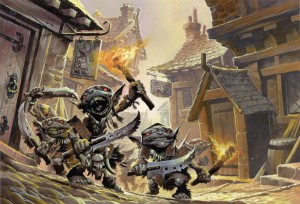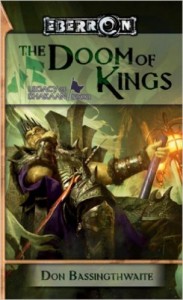
The Keep, it’s blog, the various projects already with pages and other projects forthcoming are about creating a place for gamers to acknowledge gaming’s strengths, weaknesses, and identify opportunities for growth. That sounds pretty damn pretentious, but I’m going to go with it. Basically, I want to do some of what others are doing with the people that contribute to our goals offering their own perspective and spin on gaming in general. At the same time, I want to address issues and ideas in gaming from a perspective that recognizes that we can do better, in general, with being welcoming at our tables.
With that in mind, here is how we plan to focus on these goals. We are going to write a blog, with the goal of encouraging and inviting a diverse group of gamers to participate in our conversations. If you would like to write for us, please reach out to us via Facebook or Twitter. (I’m still getting our email server set-up correctly)
Beyond the blog, we have two projects that are already in motion in one way or another. The first is the Inclusive Gaming Network. The Inclusive Gaming Network can be found on Facebook and Twitter. We are using that network to encourage the discussion around inclusion in gaming. What do we mean by this? We mean we want PLAYERS to be accepting of diversity at their tables. This includes people on the QUILTBAG spectrum and our gamers of color. At the same time, we want people to realize that we are not pushing people to explicitly change how their game characters or stories are run. We want players of all types to be encouraged and supported in this hobby. Some people enjoy ‘adult-themed’ games that address issues of racism, sexism, and violence. We support that, because we support gamers playing games that they enjoy playing. At the same time, we want to provide support to Storytellers and Game Master’s that want to explore those sorts of topics, but want to ensure their players are not made uncomfortable. This also includes providing support to players that DON’T want to play those sort of games, but their GM’s don’t realize they are going too far. There is a careful balance here, and it does boil down to communication, but once the communication has begun, we need effective language to talk about these ideas effectively. We are hoping to be helpful in facilitating those discussions.
So, that last paragraph is a bit long-winded. Excuse me for that. That being said, I have a lot to say about the goals and benefits of the Inclusive Gaming Network. I’ll be talking about that more in the future, but I wanted to give a brief description of my vision now so people know what they might be getting into.
That brings me to Reach-Out Roleplaying Games. This is really something I’m most excited about. RORPG is a project that will have at least one core product and several awesome modules. The goals of this project are to develop a core handbook that will allow gamers and Game Masters to integrate non-violent methods of conflict resolution and stories that tackle conflict from different angles into their games. I’m all for dungeon crawls where enemies are not super 3 dimensional. That’s cool, and it totally has a place for all gaming groups. That being said, game masters and players also want the option of deep, immersive, and thought-provoking games that give them challenges and experiences that might not otherwise have. We are going to develop modules that incorporate elements of the handbook, for a variety of games. Love Pathfinder? Awesome, we’ll write a module for that. Love D&D 5th edition? Cool, we can do that too. Fate? World of Darkness? Savage Worlds? Sure, we are working on options for those and other games too.
RORPG has an element of education and social justice thought process built into it. I’m sure some people will have an issue with both of those elements. I’m ok with that. Let’s discuss it, let’s deconstruct it, and let’s make it better. This is not going to be created from the angle of an Edu-tainment product. It’s going to be a fun, enjoyable gaming experience that might help people play the way they want to act. This has been powerful for me in my life. Playing characters that exemplify how I want to be, is how I changed my life. I’ll save that story for another day, but truly, faking it till you make it, or for me, playing the character I wish I was, really changed my life. Social justice is something I think we as gamers should be able to understand implicitly. We spend hours, months, weeks, years of our lives living in the shoes of other people. I think we can incorporate some realistic challenges into our games that help us deepen that understanding. I do not want this to be preachy though, and will endeavor to avoid doing so. If you catch me making that mistake, please tell me and I’ll listen. I might still disagree, but I’ll listen.
I’ve shifted from We to I in this post. That is slightly unintentional but it is something to address. At the moment, Keep on the Heathlands is currently a 1 person project with support from others. As time goes on, I will look to create more We, more people helping and developing ideas and products for the page.
Here are some things on the horizon:
Web comic: I am currently talking with a friend about hosting, writing, and developing a web comic for the page.
Regular Columnists and Posts: I’ve already asked several folks to write for the Blog and some of them have said yes. I would like to encourage others that are interested in the mission of the Keep to reach out via Facebook or Twitter if they would like to write for us.
Podcasts and Vlogs: I’m going to be doing either one or both of these things to help discuss some of the ideas of the page, gaming in general, and the products we are developing.
Please leave comments at the bottom of the page or on Twitter or Facebook.

 Clan Harchuuk. Giving them both a name for their people and individual names makes them more real, it makes them have a back story. Why are they the Darguul? Why do these two belong to this particular clan? Are all Goblins in clans? Do they have a history and clan structure that you can use in the future? All of these questions derive from the use of a name and they can help provide depth immediately. Even if you never flesh these characters out more than that, you’ve given them a little bit more life than you might have otherwise.
Clan Harchuuk. Giving them both a name for their people and individual names makes them more real, it makes them have a back story. Why are they the Darguul? Why do these two belong to this particular clan? Are all Goblins in clans? Do they have a history and clan structure that you can use in the future? All of these questions derive from the use of a name and they can help provide depth immediately. Even if you never flesh these characters out more than that, you’ve given them a little bit more life than you might have otherwise.